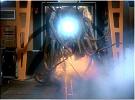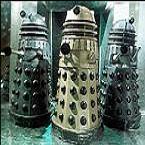Scipio Africanus
Posts: 76
Joined: 6/21/2000
From: Somerville, Ma, USA
Status: offline

|
Hi Paul, thank you for your timely and detailed response to this issue  I must say that I agree with you completely in terms of HE effectiveness against "In Cover" or "entrenched" units: It should be quite low in effect, mostly useful as a supression tool.
But I also agree with Nikademus in that infantry can currently sprint across open ground when being heavily bombarded and still not suffer terribly. Since the rulebook states that casualties include troops that have not been injured, but who simply can't continue, I find it a little difficult to believe that regular infantry can so often face down a 75 or 105 in open ground. Soldiers with their faces down in the mud, deaf and screaming are casualties (tank crews bail and refuse to take orders in similarly threatening situations, or disperse, or get counted as casualties).
So far, by jacking up the art vs soft, I have seen very little increase in casualties for units that are in cover, entrenched, or moving slowly. I have seen a massive increase in casualties to infantry doing stupid things in front of big guns or FOs. One of the things that casualty per ton of shell statistics in WWII will tell us is that, in learning from the Great War, infantry were less often ordered to do stupid things in front of artillery, such as running around in front of it.
Further, these statistics are often skewed by the fact that 90% of all bombardment occurs against hardened or entrenched targets, where it has only a very minor casualty effect. Our concern here is with the ease at which infantry can charge large guns SPWAW, a tactic that has been extremely costly for the attacker during the past 2 centuries, (even when they eventually won).
As far as the 50CAL on the M7 goes, I would assume it was used primarily for close flank defense against assualting infantry (thus it can sweep, while the turretless main gun cannot), as well as a means by which one could suppress a direct fire target while reloading the main gun. The design intent of including a 50CAL on the M7 was AA, I should think (which was not likely its function in actual use).
What the general artillery tonnage statistics don't account for are certain tactical situations that are arising in SPWAW. We know from the seemingly endless accounts of these situations that infantry should suffer greatly when it finds itself moving rapidly in open ground.
If you are interested, or if you find this argument in any way convincing, or at least worthy of consideration, here is my positive suggestion
I must say that I agree with you completely in terms of HE effectiveness against "In Cover" or "entrenched" units: It should be quite low in effect, mostly useful as a supression tool.
But I also agree with Nikademus in that infantry can currently sprint across open ground when being heavily bombarded and still not suffer terribly. Since the rulebook states that casualties include troops that have not been injured, but who simply can't continue, I find it a little difficult to believe that regular infantry can so often face down a 75 or 105 in open ground. Soldiers with their faces down in the mud, deaf and screaming are casualties (tank crews bail and refuse to take orders in similarly threatening situations, or disperse, or get counted as casualties).
So far, by jacking up the art vs soft, I have seen very little increase in casualties for units that are in cover, entrenched, or moving slowly. I have seen a massive increase in casualties to infantry doing stupid things in front of big guns or FOs. One of the things that casualty per ton of shell statistics in WWII will tell us is that, in learning from the Great War, infantry were less often ordered to do stupid things in front of artillery, such as running around in front of it.
Further, these statistics are often skewed by the fact that 90% of all bombardment occurs against hardened or entrenched targets, where it has only a very minor casualty effect. Our concern here is with the ease at which infantry can charge large guns SPWAW, a tactic that has been extremely costly for the attacker during the past 2 centuries, (even when they eventually won).
As far as the 50CAL on the M7 goes, I would assume it was used primarily for close flank defense against assualting infantry (thus it can sweep, while the turretless main gun cannot), as well as a means by which one could suppress a direct fire target while reloading the main gun. The design intent of including a 50CAL on the M7 was AA, I should think (which was not likely its function in actual use).
What the general artillery tonnage statistics don't account for are certain tactical situations that are arising in SPWAW. We know from the seemingly endless accounts of these situations that infantry should suffer greatly when it finds itself moving rapidly in open ground.
If you are interested, or if you find this argument in any way convincing, or at least worthy of consideration, here is my positive suggestion  Artillery and direct fire guns would have an effect of 200-250% of their current values vs soft targets; at the same time, effect against units moving slowly (gone to ground), entrenched, in cover, etc. would be halved from their current values (thus, infantry moving slowly would only accept 12.5% artillery effect- entrenched units 10%), which would keep those units having such disposition at their current state of protection.
Thus infantry under fire by artillery would still be in good shape if they were doing tactically smart things, they can still advance slowly or in woods or by using APCs (which would not be affected by the change in artillery) or by using smoke- all of the things that they should currently be doing.
That is my argument and my suggestion, thank you Paul, for your time, your effort, your knowledge, and your consideration.
------------------
Publius Cornelius Scipio Africanus
Artillery and direct fire guns would have an effect of 200-250% of their current values vs soft targets; at the same time, effect against units moving slowly (gone to ground), entrenched, in cover, etc. would be halved from their current values (thus, infantry moving slowly would only accept 12.5% artillery effect- entrenched units 10%), which would keep those units having such disposition at their current state of protection.
Thus infantry under fire by artillery would still be in good shape if they were doing tactically smart things, they can still advance slowly or in woods or by using APCs (which would not be affected by the change in artillery) or by using smoke- all of the things that they should currently be doing.
That is my argument and my suggestion, thank you Paul, for your time, your effort, your knowledge, and your consideration.
------------------
Publius Cornelius Scipio Africanus
_____________________________
Publius Cornelius Scipio Africanus
|
 Printable Version
Printable Version








 That's why I'm asking here - if all agree that something must be done, than most probably it will ...
That's why I'm asking here - if all agree that something must be done, than most probably it will ...  And thanks for the replies - I'll see what I can do !
Arralen
And thanks for the replies - I'll see what I can do !
Arralen

 New Messages
New Messages No New Messages
No New Messages Hot Topic w/ New Messages
Hot Topic w/ New Messages Hot Topic w/o New Messages
Hot Topic w/o New Messages Locked w/ New Messages
Locked w/ New Messages Locked w/o New Messages
Locked w/o New Messages Post New Thread
Post New Thread